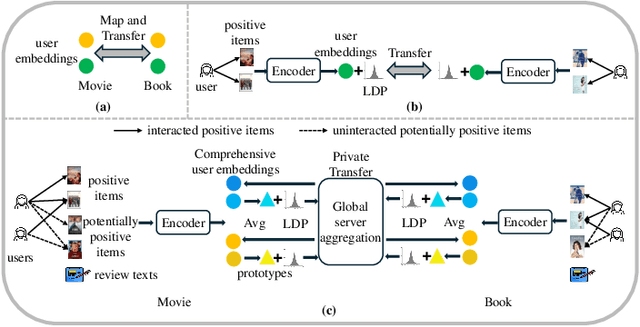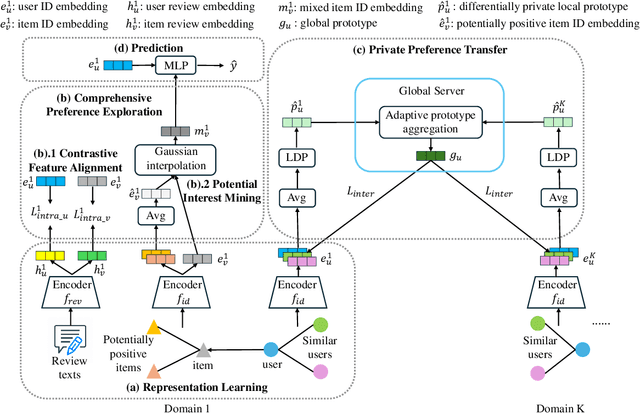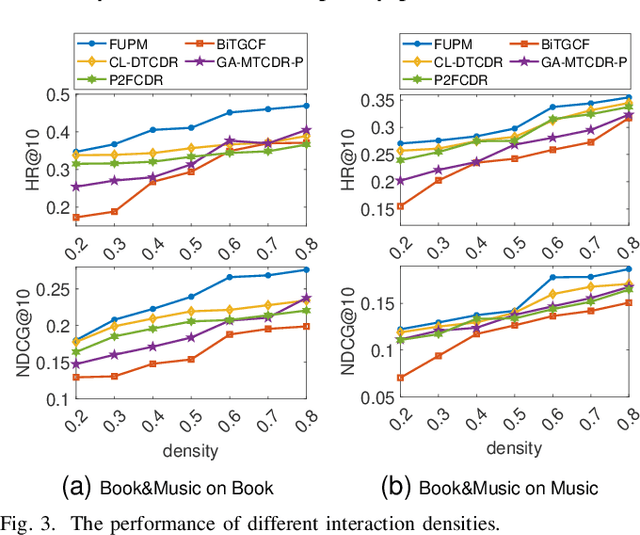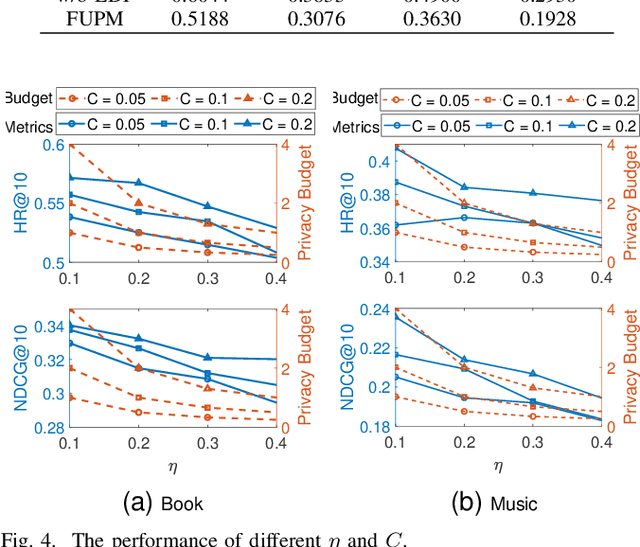Shoujin Wang
A Survey on Progress in LLM Alignment from the Perspective of Reward Design
May 05, 2025Abstract:The alignment of large language models (LLMs) with human values and intentions represents a core challenge in current AI research, where reward mechanism design has become a critical factor in shaping model behavior. This study conducts a comprehensive investigation of reward mechanisms in LLM alignment through a systematic theoretical framework, categorizing their development into three key phases: (1) feedback (diagnosis), (2) reward design (prescription), and (3) optimization (treatment). Through a four-dimensional analysis encompassing construction basis, format, expression, and granularity, this research establishes a systematic classification framework that reveals evolutionary trends in reward modeling. The field of LLM alignment faces several persistent challenges, while recent advances in reward design are driving significant paradigm shifts. Notable developments include the transition from reinforcement learning-based frameworks to novel optimization paradigms, as well as enhanced capabilities to address complex alignment scenarios involving multimodal integration and concurrent task coordination. Finally, this survey outlines promising future research directions for LLM alignment through innovative reward design strategies.
A Survey on Enhancing Causal Reasoning Ability of Large Language Models
Mar 12, 2025Abstract:Large language models (LLMs) have recently shown remarkable performance in language tasks and beyond. However, due to their limited inherent causal reasoning ability, LLMs still face challenges in handling tasks that require robust causal reasoning ability, such as health-care and economic analysis. As a result, a growing body of research has focused on enhancing the causal reasoning ability of LLMs. Despite the booming research, there lacks a survey to well review the challenges, progress and future directions in this area. To bridge this significant gap, we systematically review literature on how to strengthen LLMs' causal reasoning ability in this paper. We start from the introduction of background and motivations of this topic, followed by the summarisation of key challenges in this area. Thereafter, we propose a novel taxonomy to systematically categorise existing methods, together with detailed comparisons within and between classes of methods. Furthermore, we summarise existing benchmarks and evaluation metrics for assessing LLMs' causal reasoning ability. Finally, we outline future research directions for this emerging field, offering insights and inspiration to researchers and practitioners in the area.
A Macro- and Micro-Hierarchical Transfer Learning Framework for Cross-Domain Fake News Detection
Feb 20, 2025Abstract:Cross-domain fake news detection aims to mitigate domain shift and improve detection performance by transferring knowledge across domains. Existing approaches transfer knowledge based on news content and user engagements from a source domain to a target domain. However, these approaches face two main limitations, hindering effective knowledge transfer and optimal fake news detection performance. Firstly, from a micro perspective, they neglect the negative impact of veracity-irrelevant features in news content when transferring domain-shared features across domains. Secondly, from a macro perspective, existing approaches ignore the relationship between user engagement and news content, which reveals shared behaviors of common users across domains and can facilitate more effective knowledge transfer. To address these limitations, we propose a novel macro- and micro- hierarchical transfer learning framework (MMHT) for cross-domain fake news detection. Firstly, we propose a micro-hierarchical disentangling module to disentangle veracity-relevant and veracity-irrelevant features from news content in the source domain for improving fake news detection performance in the target domain. Secondly, we propose a macro-hierarchical transfer learning module to generate engagement features based on common users' shared behaviors in different domains for improving effectiveness of knowledge transfer. Extensive experiments on real-world datasets demonstrate that our framework significantly outperforms the state-of-the-art baselines.
Generating with Fairness: A Modality-Diffused Counterfactual Framework for Incomplete Multimodal Recommendations
Jan 21, 2025Abstract:Incomplete scenario is a prevalent, practical, yet challenging setting in Multimodal Recommendations (MMRec), where some item modalities are missing due to various factors. Recently, a few efforts have sought to improve the recommendation accuracy by exploring generic structures from incomplete data. However, two significant gaps persist: 1) the difficulty in accurately generating missing data due to the limited ability to capture modality distributions; and 2) the critical but overlooked visibility bias, where items with missing modalities are more likely to be disregarded due to the prioritization of items' multimodal data over user preference alignment. This bias raises serious concerns about the fair treatment of items. To bridge these two gaps, we propose a novel Modality-Diffused Counterfactual (MoDiCF) framework for incomplete multimodal recommendations. MoDiCF features two key modules: a novel modality-diffused data completion module and a new counterfactual multimodal recommendation module. The former, equipped with a particularly designed multimodal generative framework, accurately generates and iteratively refines missing data from learned modality-specific distribution spaces. The latter, grounded in the causal perspective, effectively mitigates the negative causal effects of visibility bias and thus assures fairness in recommendations. Both modules work collaboratively to address the two aforementioned significant gaps for generating more accurate and fair results. Extensive experiments on three real-world datasets demonstrate the superior performance of MoDiCF in terms of both recommendation accuracy and fairness
Dual Contrastive Transformer for Hierarchical Preference Modeling in Sequential Recommendation
Oct 30, 2024



Abstract:Sequential recommender systems (SRSs) aim to predict the subsequent items which may interest users via comprehensively modeling users' complex preference embedded in the sequence of user-item interactions. However, most of existing SRSs often model users' single low-level preference based on item ID information while ignoring the high-level preference revealed by item attribute information, such as item category. Furthermore, they often utilize limited sequence context information to predict the next item while overlooking richer inter-item semantic relations. To this end, in this paper, we proposed a novel hierarchical preference modeling framework to substantially model the complex low- and high-level preference dynamics for accurate sequential recommendation. Specifically, in the framework, a novel dual-transformer module and a novel dual contrastive learning scheme have been designed to discriminatively learn users' low- and high-level preference and to effectively enhance both low- and high-level preference learning respectively. In addition, a novel semantics-enhanced context embedding module has been devised to generate more informative context embedding for further improving the recommendation performance. Extensive experiments on six real-world datasets have demonstrated both the superiority of our proposed method over the state-of-the-art ones and the rationality of our design.
Modeling Temporal Positive and Negative Excitation for Sequential Recommendation
Oct 29, 2024



Abstract:Sequential recommendation aims to predict the next item which interests users via modeling their interest in items over time. Most of the existing works on sequential recommendation model users' dynamic interest in specific items while overlooking users' static interest revealed by some static attribute information of items, e.g., category, or brand. Moreover, existing works often only consider the positive excitation of a user's historical interactions on his/her next choice on candidate items while ignoring the commonly existing negative excitation, resulting in insufficient modeling dynamic interest. The overlook of static interest and negative excitation will lead to incomplete interest modeling and thus impede the recommendation performance. To this end, in this paper, we propose modeling both static interest and negative excitation for dynamic interest to further improve the recommendation performance. Accordingly, we design a novel Static-Dynamic Interest Learning (SDIL) framework featured with a novel Temporal Positive and Negative Excitation Modeling (TPNE) module for accurate sequential recommendation. TPNE is specially designed for comprehensively modeling dynamic interest based on temporal positive and negative excitation learning. Extensive experiments on three real-world datasets show that SDIL can effectively capture both static and dynamic interest and outperforms state-of-the-art baselines.
NeuroClips: Towards High-fidelity and Smooth fMRI-to-Video Reconstruction
Oct 28, 2024Abstract:Reconstruction of static visual stimuli from non-invasion brain activity fMRI achieves great success, owning to advanced deep learning models such as CLIP and Stable Diffusion. However, the research on fMRI-to-video reconstruction remains limited since decoding the spatiotemporal perception of continuous visual experiences is formidably challenging. We contend that the key to addressing these challenges lies in accurately decoding both high-level semantics and low-level perception flows, as perceived by the brain in response to video stimuli. To the end, we propose NeuroClips, an innovative framework to decode high-fidelity and smooth video from fMRI. NeuroClips utilizes a semantics reconstructor to reconstruct video keyframes, guiding semantic accuracy and consistency, and employs a perception reconstructor to capture low-level perceptual details, ensuring video smoothness. During inference, it adopts a pre-trained T2V diffusion model injected with both keyframes and low-level perception flows for video reconstruction. Evaluated on a publicly available fMRI-video dataset, NeuroClips achieves smooth high-fidelity video reconstruction of up to 6s at 8FPS, gaining significant improvements over state-of-the-art models in various metrics, e.g., a 128% improvement in SSIM and an 81% improvement in spatiotemporal metrics. Our project is available at https://github.com/gongzix/NeuroClips.
Federated User Preference Modeling for Privacy-Preserving Cross-Domain Recommendation
Aug 26, 2024



Abstract:Cross-domain recommendation (CDR) aims to address the data-sparsity problem by transferring knowledge across domains. Existing CDR methods generally assume that the user-item interaction data is shareable between domains, which leads to privacy leakage. Recently, some privacy-preserving CDR (PPCDR) models have been proposed to solve this problem. However, they primarily transfer simple representations learned only from user-item interaction histories, overlooking other useful side information, leading to inaccurate user preferences. Additionally, they transfer differentially private user-item interaction matrices or embeddings across domains to protect privacy. However, these methods offer limited privacy protection, as attackers may exploit external information to infer the original data. To address these challenges, we propose a novel Federated User Preference Modeling (FUPM) framework. In FUPM, first, a novel comprehensive preference exploration module is proposed to learn users' comprehensive preferences from both interaction data and additional data including review texts and potentially positive items. Next, a private preference transfer module is designed to first learn differentially private local and global prototypes, and then privately transfer the global prototypes using a federated learning strategy. These prototypes are generalized representations of user groups, making it difficult for attackers to infer individual information. Extensive experiments on four CDR tasks conducted on the Amazon and Douban datasets validate the superiority of FUPM over SOTA baselines. Code is available at https://github.com/Lili1013/FUPM.
Structural Representation Learning and Disentanglement for Evidential Chinese Patent Approval Prediction
Aug 23, 2024



Abstract:Automatic Chinese patent approval prediction is an emerging and valuable task in patent analysis. However, it involves a rigorous and transparent decision-making process that includes patent comparison and examination to assess its innovation and correctness. This resultant necessity of decision evidentiality, coupled with intricate patent comprehension presents significant challenges and obstacles for the patent analysis community. Consequently, few existing studies are addressing this task. This paper presents the pioneering effort on this task using a retrieval-based classification approach. We propose a novel framework called DiSPat, which focuses on structural representation learning and disentanglement to predict the approval of Chinese patents and offer decision-making evidence. DiSPat comprises three main components: base reference retrieval to retrieve the Top-k most similar patents as a reference base; structural patent representation to exploit the inherent claim hierarchy in patents for learning a structural patent representation; disentangled representation learning to learn disentangled patent representations that enable the establishment of an evidential decision-making process. To ensure a thorough evaluation, we have meticulously constructed three datasets of Chinese patents. Extensive experiments on these datasets unequivocally demonstrate our DiSPat surpasses state-of-the-art baselines on patent approval prediction, while also exhibiting enhanced evidentiality.
Robust Multivariate Time Series Forecasting against Intra- and Inter-Series Transitional Shift
Jul 18, 2024



Abstract:The non-stationary nature of real-world Multivariate Time Series (MTS) data presents forecasting models with a formidable challenge of the time-variant distribution of time series, referred to as distribution shift. Existing studies on the distribution shift mostly adhere to adaptive normalization techniques for alleviating temporal mean and covariance shifts or time-variant modeling for capturing temporal shifts. Despite improving model generalization, these normalization-based methods often assume a time-invariant transition between outputs and inputs but disregard specific intra-/inter-series correlations, while time-variant models overlook the intrinsic causes of the distribution shift. This limits model expressiveness and interpretability of tackling the distribution shift for MTS forecasting. To mitigate such a dilemma, we present a unified Probabilistic Graphical Model to Jointly capturing intra-/inter-series correlations and modeling the time-variant transitional distribution, and instantiate a neural framework called JointPGM for non-stationary MTS forecasting. Specifically, JointPGM first employs multiple Fourier basis functions to learn dynamic time factors and designs two distinct learners: intra-series and inter-series learners. The intra-series learner effectively captures temporal dynamics by utilizing temporal gates, while the inter-series learner explicitly models spatial dynamics through multi-hop propagation, incorporating Gumbel-softmax sampling. These two types of series dynamics are subsequently fused into a latent variable, which is inversely employed to infer time factors, generate final prediction, and perform reconstruction. We validate the effectiveness and efficiency of JointPGM through extensive experiments on six highly non-stationary MTS datasets, achieving state-of-the-art forecasting performance of MTS forecasting.
 Add to Chrome
Add to Chrome Add to Firefox
Add to Firefox Add to Edge
Add to Edge